The McDonnell Douglas F-4 Phantom IIis a tandem two-seat, twin-engine, all-weather, long-range supersonic jet interceptor aircraft/fighter-bomber originally developed for the United States Navy by McDonnell Aircraft. It first entered service in 1960 with the U.S. Navy. Proving highly adaptable, it was also adopted by the U.S. Marine Corps and the U.S. Air Force, and by the mid-1960s had become a major part of their respective air wings.
The Phantom is a large fighter with a top speed of over Mach 2.2. It can carry more than 18,000 pounds (8,400 kg) of weapons on nine external hardpoints, including air-to-air missiles, air-to-ground missiles, and various bombs. The F-4, like other interceptors of its time, was designed without an internal cannon. Later models incorporated an M61 Vulcan rotary cannon. Beginning in 1959, it set 15 world records for in-flight performance, including an absolute speed record, and an absolute altitude record.
During the Vietnam War, the F-4 was used extensively; it served as the principal air superiority fighter for both the Navy and Air Force, and became important in the ground-attack and aerial reconnaissance roles late in the war. The Phantom has the distinction of being the last U.S. fighter flown to attain ace status in the 20th century. During the Vietnam War, the U.S. Air Force had one pilot and two weapon systems officers (WSOs),and the US Navy had one pilot and one radar intercept officer (RIO) become aces by achieving five aerial kills against enemy fighter aircraft. The F-4 continued to form a major part of U.S. military air power throughout the 1970s and 1980s, being gradually replaced by more modern aircraft such as the F-15 Eagle and F-16 in the U.S. Air Force, the Grumman F-14 Tomcat in the U.S. Navy, and the F/A-18 Hornet in the U.S. Navy and U.S. Marine Corps.
The F-4 Phantom II remained in use by the U.S. in the reconnaissance and Wild Weasel (Suppression of Enemy Air Defenses) roles in the 1991 Gulf War, finally leaving service in 1996. It was also the only aircraft used by both U.S. flight demonstration teams: the USAF Thunderbirds (F-4E) and the US Navy Blue Angels (F-4J).The F-4 was also operated by the armed forces of 11 other nations. Israeli Phantoms saw extensive combat in several Arab–Israeli conflicts, while Iran used its large fleet of Phantoms in the Iran–Iraq War. Phantoms remain in front line service with five countries. Phantom production ran from 1958 to 1981, with a total of 5,195 built, making it the most numerous American supersonic.
In 1979, the Checkerboards became the first 2nd Marine Aircraft Wing fighter squadron to deploy to the Western Pacific under the Unit Deployment Program (UDP). Since joining the UDP cycle, VMFA-312 has made five six-month deployments to the Western Pacific as well as participated in numerous training deployments around the United States. Upon completion of the first six-month UDP rotation, the Checkerboards became the first squadron to receive the F-4S variant of the Phantom, which incorporated leading edge slats as well as advanced radar. In July 1987, VMFA-312 retired its F-4 aircraft and transitioned to the F/A-18A Hornet.
This is the Tamiya 1/32 kit, which is starting to show its age, not sure why they include the screws for fitting, but anyway, she went together rather painlessly I used resin ejector seats and engine pots, with quite a lot of Eduard brass in, the pilots were from PJ productions, again my thanks to Jenifer @ JS miniatures for the lighting rig, and programming the chip.
Main decals were from the colourful F-4J phantoms, very nice, more than could be said for the kit decals, they were dread full, and I had to delve in to my spares box, good old spares
The armaments were Eduard but only the sparrow and sidewinders, I was going to use the Eduard kit on the bombs but the kit sufficed nicely.
She was all painted using Tamiya paints,
Enjoy
Mike
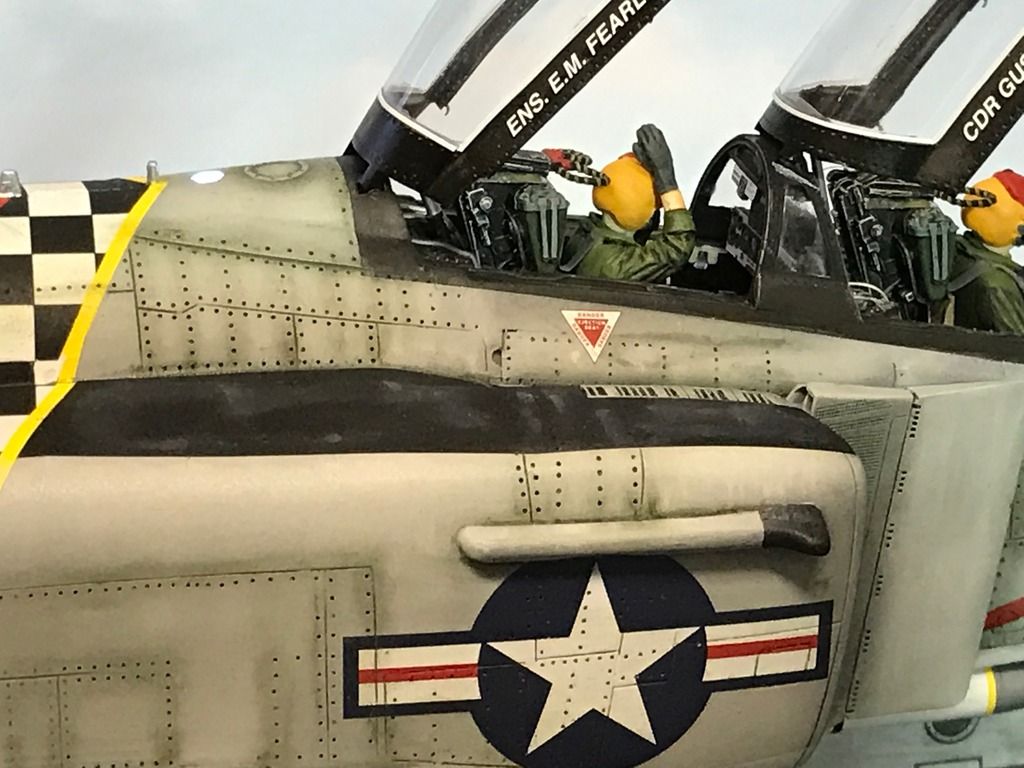
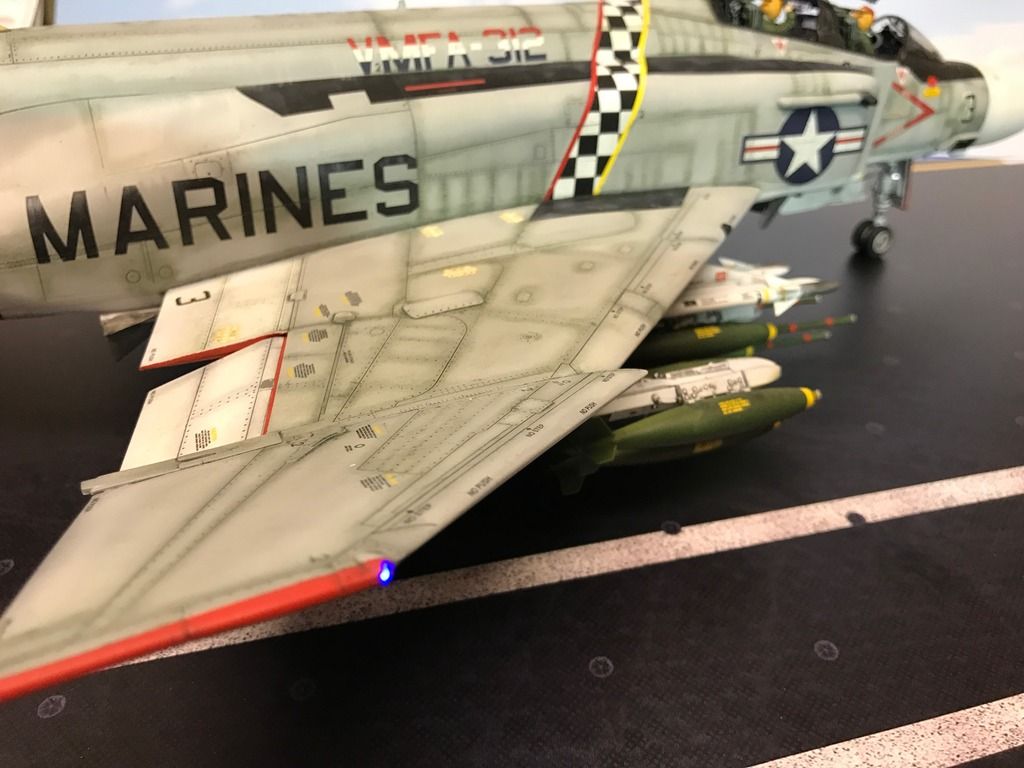
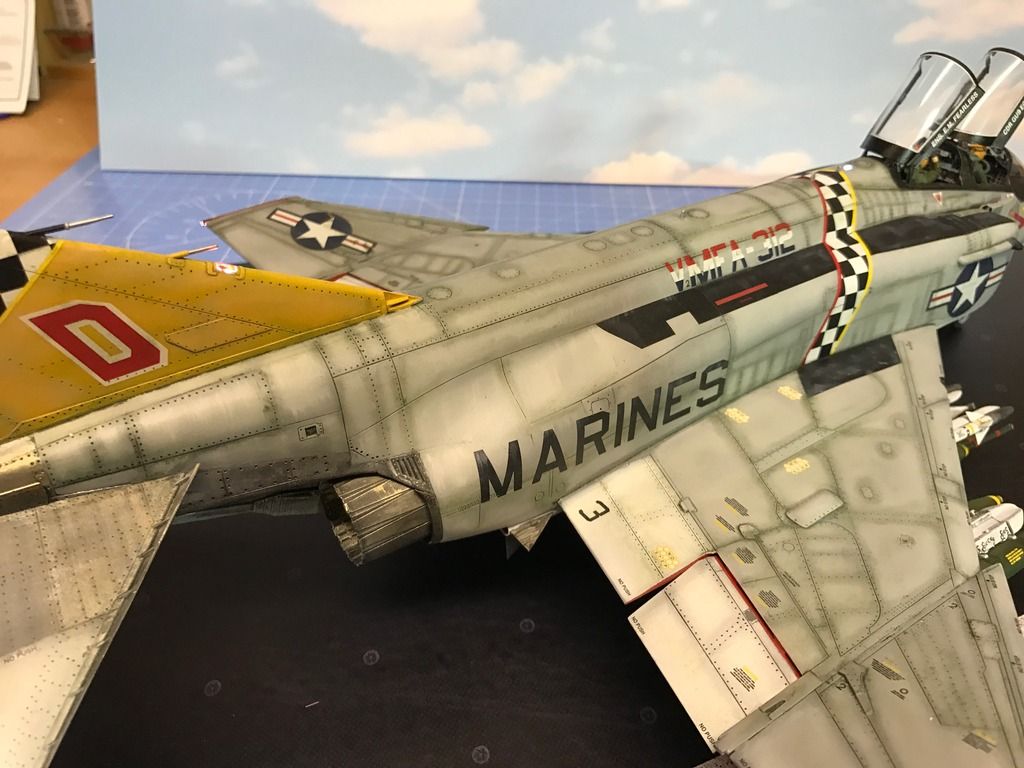

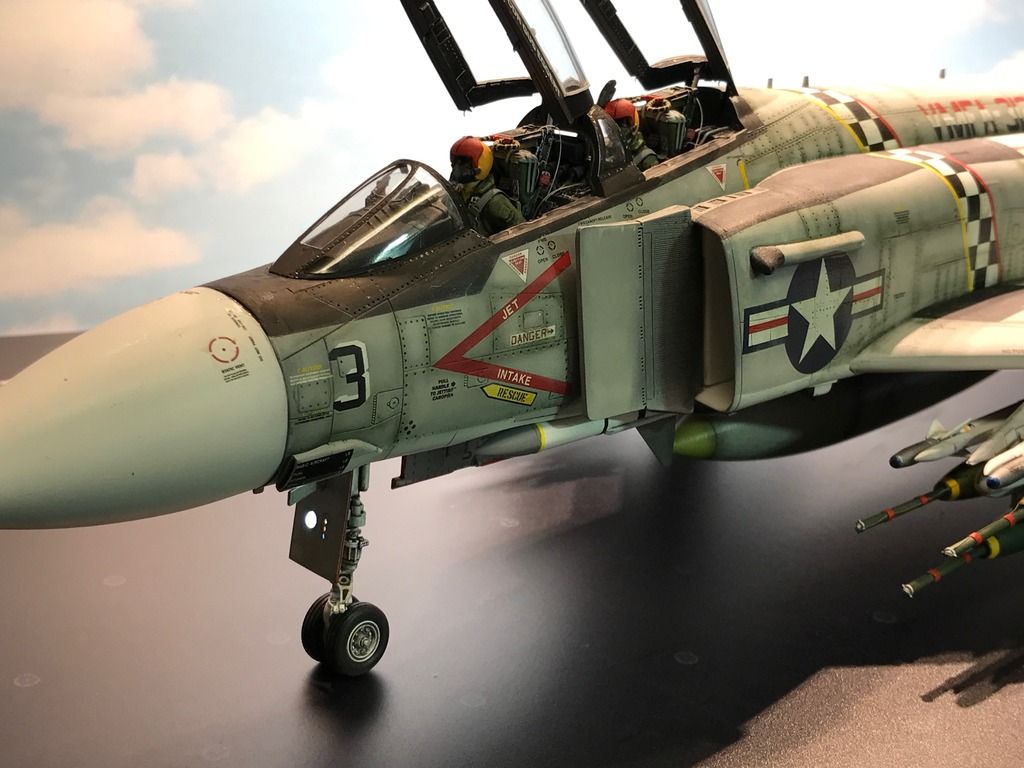
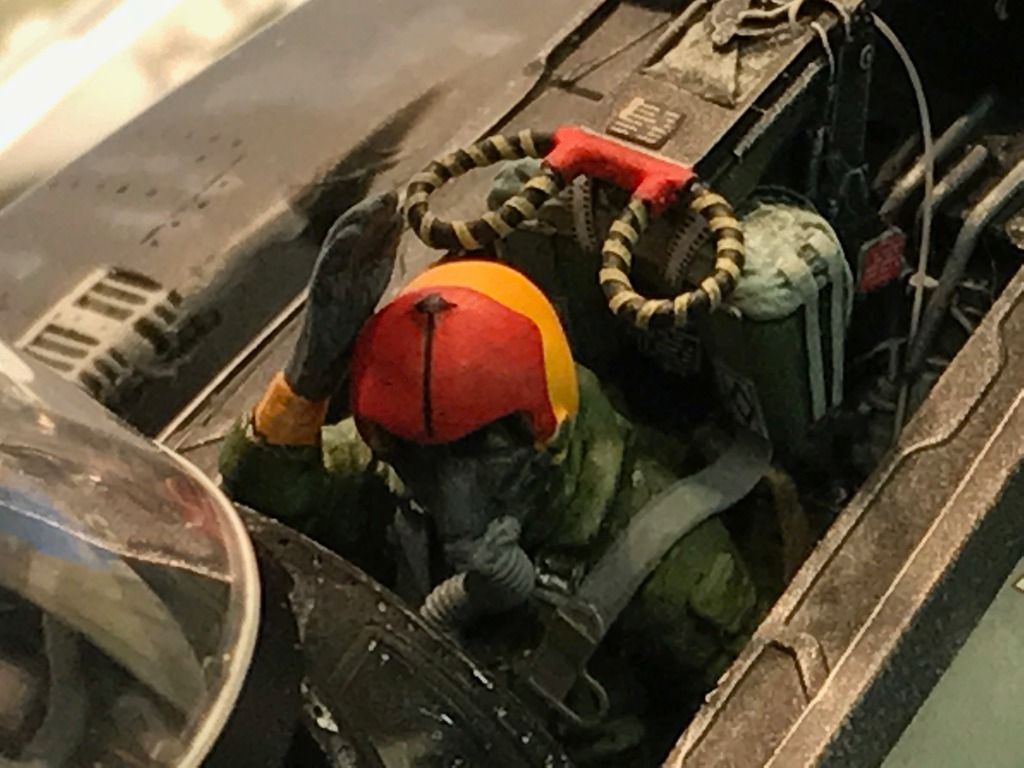
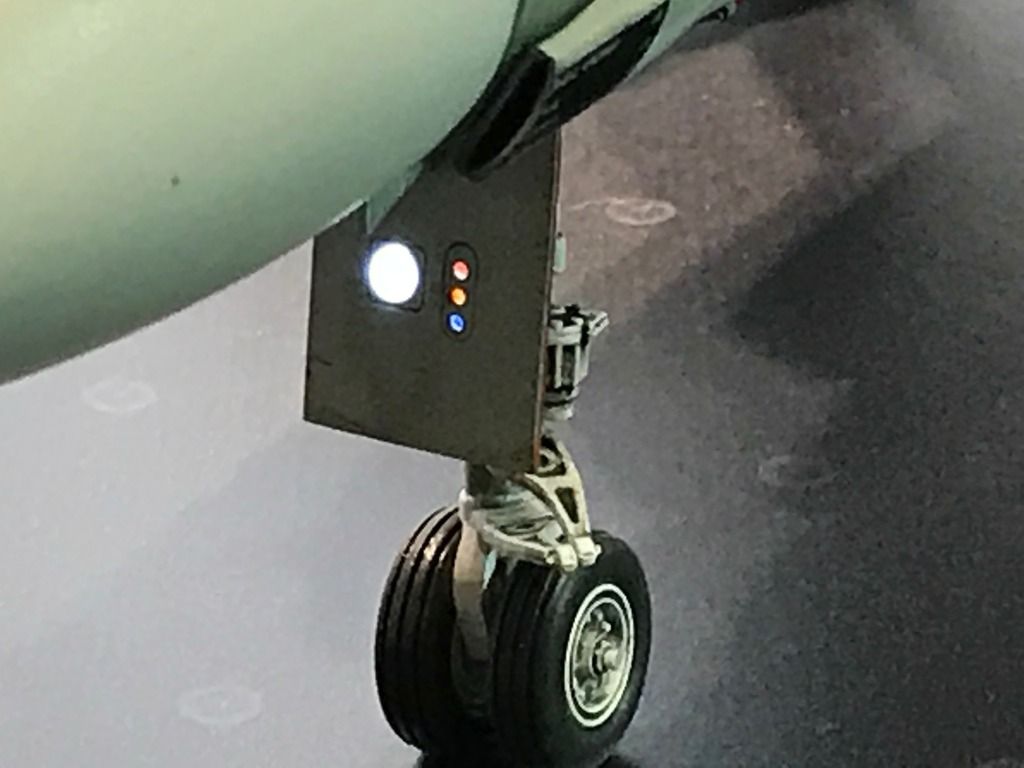
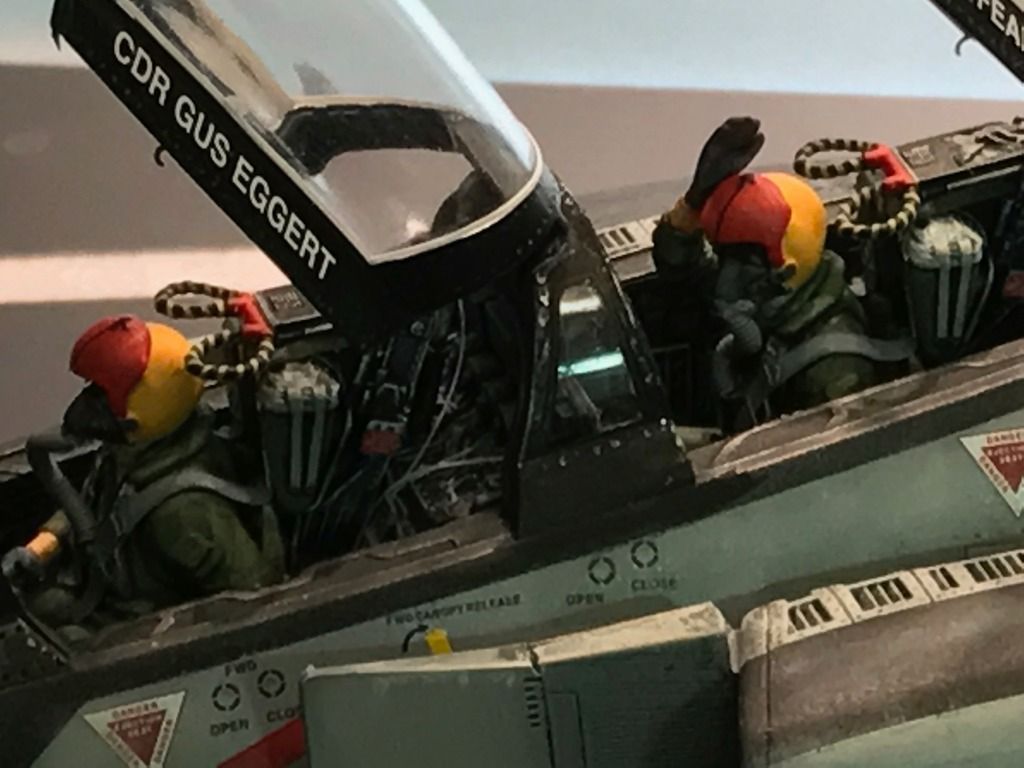
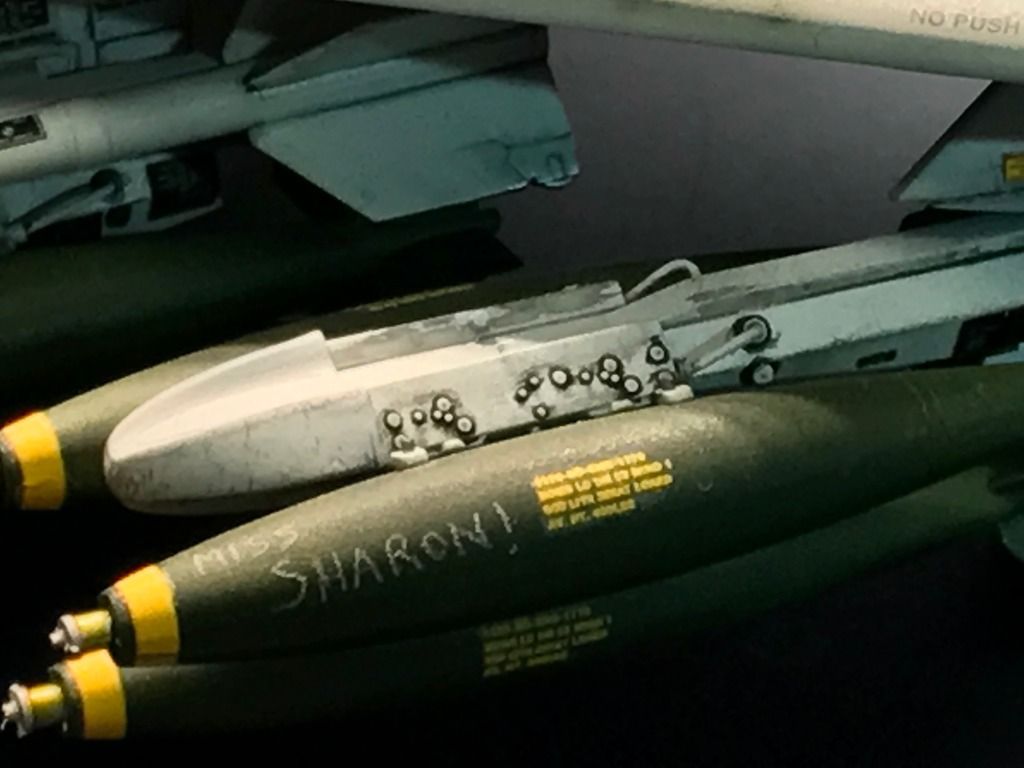
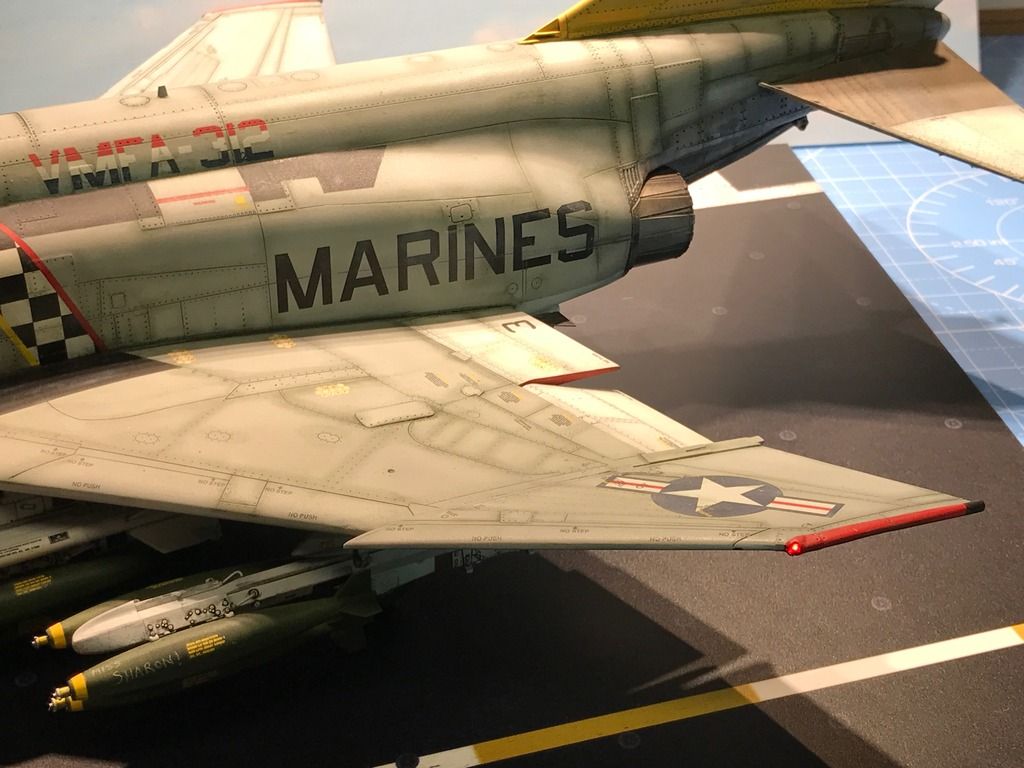
https://www.youtube.com/watch?v=26N1DFtpevo